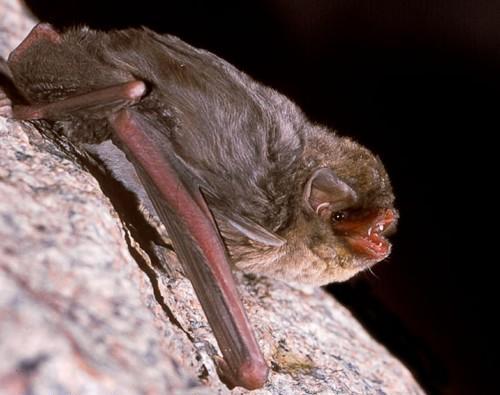Schreiber’s long–fingered bat: Red Data Book of Armenia

Vesper bats - Vespertilionidae
Status. Listed in the Red Data Book of the former USSR. Listed in the IUCN Red List of Threatened Species (ver. 3.1) as Near Threatened NT. According to IUCN criteria categorized as Vulnerable VU B1ab(iii)+2ab(iii).
Distribution. Spain, Africa, Madagascar, India, China, Central Asia, Malayan Archipelago, Australia, Papua New Guinea, Crimea, Caucasus.
Distribution in Armenia. Distributed in all provinces, except the Shirak, Aragatsotn and the northern parts of Gegharkunik. Most frequently occurs in Yerevan and the Armavir, Vayots Dzor and Syunik provinces.
Habitats. Lives only in caves, preferably in the karst, wide and well–ventilated ones. Often co–exists with other vesper and horseshoe bats.
Biological traits. In winter these bats leave their caves and migrate to other countries. Active from early spring to late autumn. Flies fast to catch insects from water surface, roads and other open spaces (forest edges, canyons, squares of villages and towns). In late May–early June the female gives birth to one baby. Big maternal colonies can occasionally be formed.
Population size and its trends. At present, numbers of this bat in colonies have significantly reduced.
Major threats. Human disturbance during the breeding and rearing periods. Deterioration of wintering conditions.
Conservation measures. Some caves are included to the list of natural monuments. The Magili, Mozrov and Arji caves are closed to human visitations. It is essential to close human access to the habitats of this bat.
Suggestions
 The Ministry of Environment sent a letter international partners to draw their attention to the real danger of environmental disasters as a result of Azerbaijan's large-scale aggression towards the territory of Armenia
The Ministry of Environment sent a letter international partners to draw their attention to the real danger of environmental disasters as a result of Azerbaijan's large-scale aggression towards the territory of Armenia
 Vicia pisiformis: Red Data Book of Armenia
Vicia pisiformis: Red Data Book of Armenia
 Vavilovia formosa: Red Data Book of Armenia
Vavilovia formosa: Red Data Book of Armenia
 Trigonella capitata: Red Data Book of Armenia
Trigonella capitata: Red Data Book of Armenia
 Trigonella astroides: Red Data Book of Armenia
Trigonella astroides: Red Data Book of Armenia












